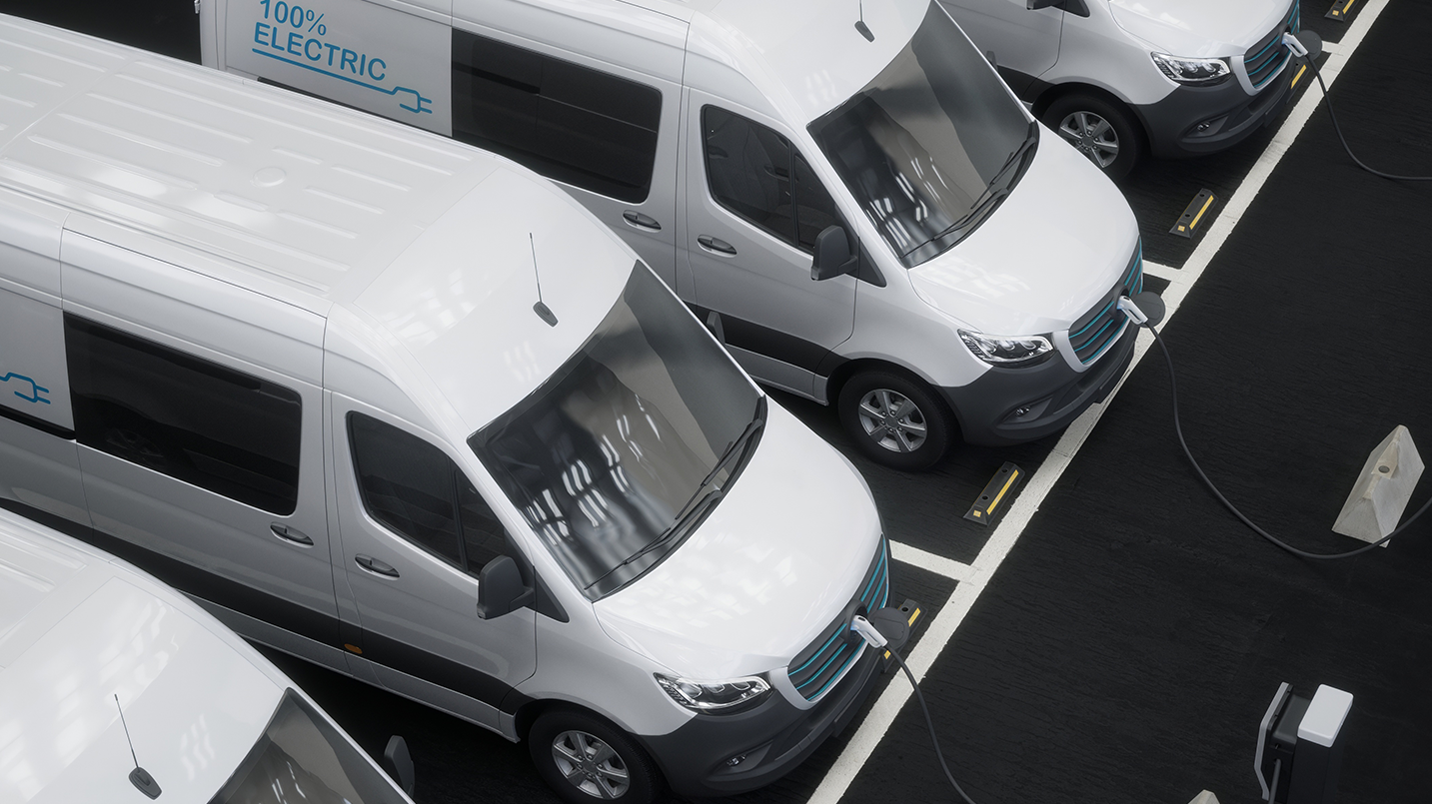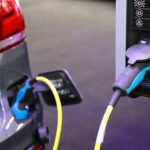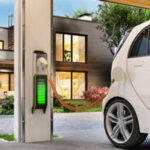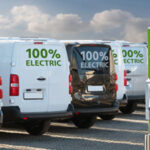-
What We DoFrom fleet management and productivity solutions to upfitting, fabrication, and insurance, Holman has the integrated automotive services expertise to keep your business moving.Overview
-
ResourcesWe have a lot to share. Browse our resources library for current insights, data, strategies, and success stories from our own experts in their respective fields.Overview
-
About UsWhen Holman was founded in 1924, we set something positive in motion. Our consistent focus on people and our commitment to integrity make us who we are today.Overview
 Join Our TeamWe’re not just in the automotive business, we’re in the people business. Join us for the ride.Browse Careers
Join Our TeamWe’re not just in the automotive business, we’re in the people business. Join us for the ride.Browse Careers
Switching to Electric Vans: What You Need to Know

With the 2035 deadline for phasing out petrol and diesel vehicles in the not-so-distant future, the electric van market is picking up pace. Whether you’re a seasoned fleet manager already in the process of switching, or if you’re just starting to explore sustainability options on the journey to net zero, Holman is your trusted guide to help you navigate the exciting (and sometimes challenging) world of electric vans.
Current Landscape
There has been a recent surge in the electric van market – with record uptake rising by 20% in 2023. There are now over 60,000 electric vans on the UK’s roads, with diverse options emerging to suit most fleet needs. This growth is matched by the expanding charging infrastructure, with over 55,000 public points, helping to ease range anxiety.
Continuously improving ranges, payloads, and charging speeds are making electric vans even more viable. And with the improved battery tech as well as current Government Plug-in Van Grants (up to £5,000!), now’s the perfect time to explore your electric fleet transition.
Overview of Electric Vans on the Market – What’s out there?
Newcomers like Kia are bringing exciting models to market, joining established manufacturers such as Fiat, Mercedes, and Ford – contributing to the registration of 28 different electric van models in 2023.
The Stellantis family (Citroen, Peugeot, Toyota, Fiat, Vauxhall) offers a diverse lineup of small, medium, and large electric vans, all benefiting from the same battery technology. They each have varied payload and range needs to suit most needs.
Renault’s Kangoo E-Tech, a pioneer since 2012, competes with the Stellantis group in the small van market, having expanded its mileage range 186 miles (WLTP). For large vans, Ford’s E-Transit is a noteworthy addition with its large loadspace of up to 15.1m3, high payloads, and ranges nearing 200 miles (WLTP), joining the Fiat e-Ducato and Mercedes eSprinter in this space.
For something a bit different take a look at the VW ID Buzz Cargo, the first commercial vehicle to launch under the VW’s new ID. Family. Its design is based on the classic VW Bulli, but with capacity to take two loaded euro pallets.
Given the constant influx of new models with varying spec, research is essential to find the ideal fit for your business needs and driving habits.
The Benefits of Electric Vans
Transitioning your fleet to electric vans isn’t just about meeting these Government targets; it can be great for your business too. Here’s a breakdown of the benefits you can enjoy:
- Lower Emissions: Switching the UK’s van fleet could cut 20 million tonnes of CO2 annually – says new research from Vauxhall
- Money Savings: Lower maintenance costs & 3-4 times cheaper to recharge than ICE vehicles
- Reliability: Fewer moving parts mean less downtime & extended maintenance schedules
- Government Boost: Get £2,500-£5,000 plug-in van grants
- Brand Image: Show your commitment to sustainability & build a positive image
- Smooth ride: Enjoy a quieter driving experience, with smooth, powerful acceleration for a more engaging ride
- Future-Proof: Be prepared for potential bans on petrol/diesel vehicles in certain cities or low-emission zones
Factors to Consider
Switching to electric vans presents unique challenges compared to transitioning to electric cars, especially considering individual business needs. We recognise the importance of effective fleet management in this process and can assist you in considering the following factors:
- Upfront cost – Electric vehicles require a higher initial investment. Have you explored the best funding options available?
- Charging infrastructure – While access to charging points is increasing, it may still be limited in some regions. Have you explored options like on-site charging or driver reimbursement for home charging? Consider where the vehicles will be charged overnight and its practicality for your drivers.
- Limited range – Although electric vans now offer ranges exceeding 200 miles, real-world factors like cold weather or full loads can significantly reduce distances. Evaluate your typical driving routines to determine if the range meets your needs.
- Charging time – Charging an electric van takes longer than refuelling an ICE vehicle. Consider the impact of charging times on driver schedules.
- Specialised use – Certain industries, such as refrigerated transport, may require specific adaptations. Is there an electric van range suitable for your business needs?
- Training – It is important to train drivers on efficient EV driving techniques, considering regenerative braking and stop-start nature.
Your Partner in Sustainable Fleets
Thinking about going electric? Our experience with EV fleets helps businesses make the switch efficiently and cost-effectively. We offer flexible funding solutions that suit your budget and timeline, whilst giving you the flexibility to act when it suits you. This means your fleet can be switched to electric at a moment’s notice, taking advantage of new deals or staying ahead of legislation without being tied into a rigid contracts.
For smarter operations, we can help optimise charging schedules and route efficiency by leveraging telematics. As well as proactively managing SMR schedules ensuring your electric van gets to a specialised mechanic with the know-how for EVs.
We’re with you every step of the way, whether its help with funding, leveraging telematics, ensuring compliance, or specialised SMR support, we have the expertise to help you navigate the change.
Conclusion
The electric van market is booming, and with the 2035 deadline approaching, there’s no better time to develop your EV strategy. Reduce your carbon footprint, save money on fuel, and future-proof your fleet – the benefits of switching to electric vans are undeniable. But navigating the initial cost, charging infrastructure, and finding the right solution can be challenging.
That’s where Holman comes in. We harness data analysis and provide expert guidance to ensure your electric fleet transition is smooth, cost-effective, and tailored to your specific business goals.
With Holman, you have a committed partner at every stage, ready to support your journey toward zero emissions at a pace that suits your business and objectives.
Ready to embrace the future of sustainable transportation? Contact us today and let’s make your electric van journey a success.
Related Resources
Explore more related industry news, insights, and developments.
It looks like you've navigated to our Holman UK website and are located outside of this region. Would you like to continue or select a different region?
✕






